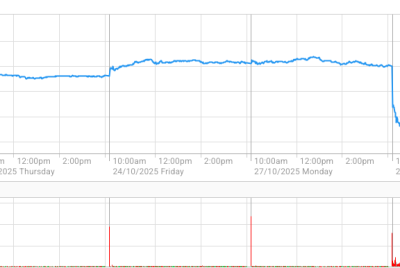22% Of Private Renters Live Below Poverty Line In Australia Amid Growing Affordability Crisis

A new study has revealed that 22% of Australians renting privately live below the poverty line, with the situation even more severe for those in social housing, where over 50% are affected.
In addition, one in five private renters faces the risk of multiple material deprivation, underscoring the growing crisis in housing affordability and living standards.
According to a new joint study by the Australian Council of Social Service (ACOSS) and the University of New South Wales, many renters, along with various Australian groups receiving welfare payments, face multiple material deprivation, meaning they are living without two or more essential items.
Multiple material deprivation occurs when an individual cannot afford two or more essential items, such as a stable and secure home, an annual dental check-up, and AU$500 in savings for emergencies.
The report identified eight groups as being particularly at high risk of multiple deprivation -- JobSeeker Payment, Parenting Payment, Disability Support Pension, or Youth Allowance, single-parent families, First Nations people, and those renting social or private housing.
ACOSS Chief Executive Cassandra Goldie told ABC's 7.30 that the situation painted a grim picture, highlighting that Australians on welfare schemes were among the most vulnerable. She urged the federal government to address the growing wealth inequality.
"People receiving income support are experiencing multiple material deprivation at rates that far exceed the general population," Goldie said. "This tells us that JobSeeker, Youth Allowance and related payments are so woefully low that people can't afford the basic essentials of life. People on JobSeeker, they're 14 times more likely to be going regularly without a substantial meal a day."
Yuvisthi Naidoo, a senior research fellow at UNSW, stated that the report demonstrated Australia's income support system has been inadequate in preventing deprivation.
"Income support payment levels are set assuming that everyone has access to universal healthcare and adequate social services - but the high rates of people lacking dental and medical care shows that assumption is flawed," he pointed out.
The report found that people on JobSeeker were about five times more likely to lack two or more essential items compared to the general population (45% vs 9%).
Meanwhile, those receiving a Parenting Payment are roughly four times more likely to face this issue (38%). Single parents (29%) and First Nations people (32%) were three times more likely to lack two or more essential items. Private renters were twice as likely to experience multiple deprivation compared to the general population (19%).
The report also revealed that individuals on JobSeeker were 14 times more likely to miss a substantial meal at least once a day, nearly nine times more likely to lack a mobile phone or motor vehicle, and eight times more likely to lack access to the internet at home or a washing machine.
Additionally, 81% of people with low wealth and incomes below the poverty line were experiencing material deprivation, while 50% of unemployed households are facing multiple deprivation.
Goldie urged the federal government to raise the JobSeeker rate to match the pension rate of AU$82 per day, up from the current AU$56 per day.
"In its upcoming Budget, the Federal Government must raise income support payments to liveable levels, fix employment services, boost social housing and enact a jobs, services and training plan to reduce long-term unemployment," she stated.
A recent report revealed that renters in Sydney and Perth were, on average, spending more than 30% of their income on rent. Additionally, there were growing concerns about rising eviction rates nationwide as rents continued to climb.
For those on JobSeeker, finding affordable housing in the private rental market had become nearly impossible, highlighting the failure of basic community standards.
© Copyright 2025 IBTimes AU. All rights reserved.





















